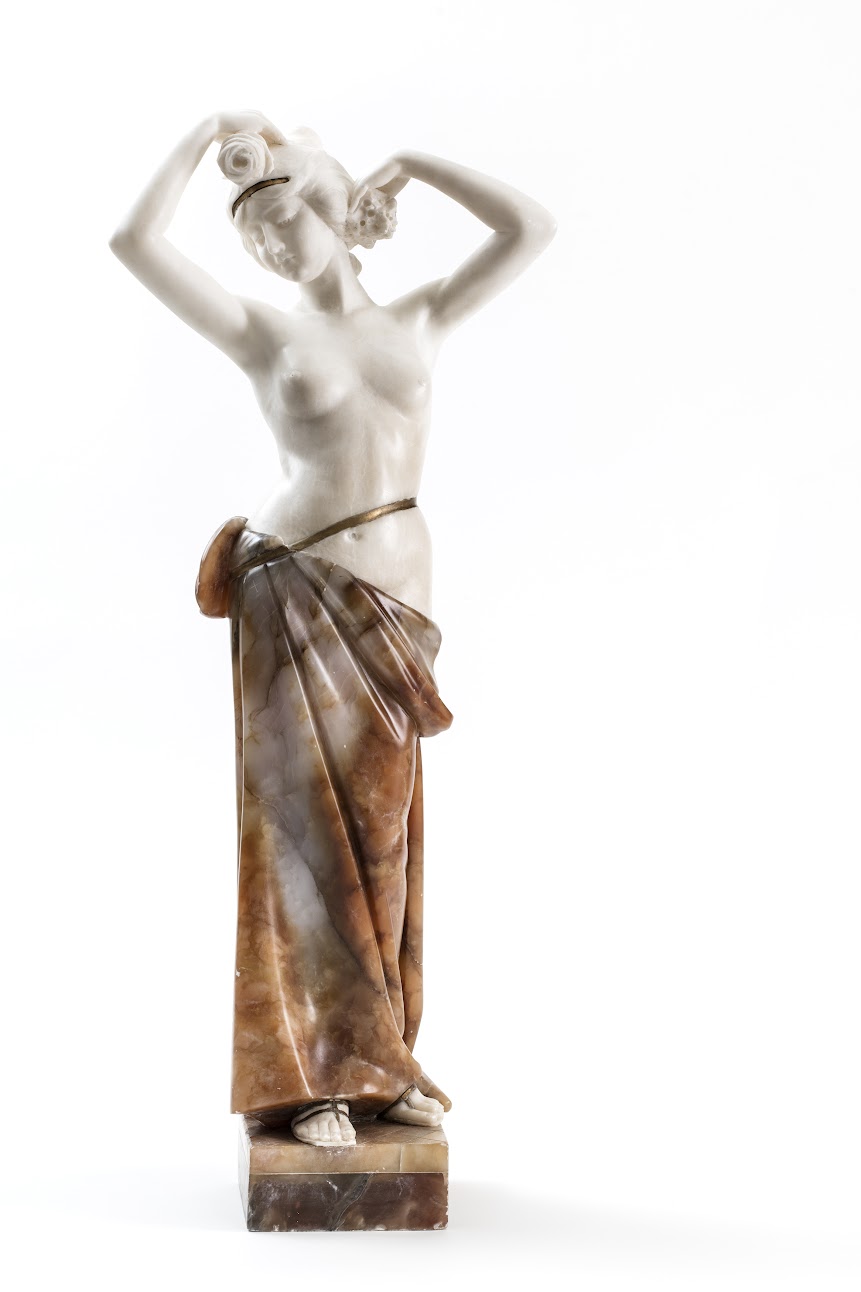Ferdinando Vichi was born in 1875 in Florence, into a noble Tuscan family. From an early age, he displayed a fascination with the beauty of form and an attraction to sculpture. This early passion led him to the Academy of Fine Arts in Florence, where he trained under masters Augusto Rivalta and Cesare Zocchi. While still very young, he exhibited La Baigneuse at the Paris Salon, a work that was immediately noticed and awarded.
A cosmopolitan artist, Vichi traveled widely. He created works in Germany, France, England, both Americas, and even India, earning unanimous acclaim wherever he went. By the time he was not yet twenty, international critics already hailed him as a master in the making.
Vichi became a central figure of Florentine sculpture between the late 19th and the first half of the 20th century. His art stands firmly within the great classical tradition, enriched with mythology, Renaissance ideals, and Romantic sensibility. His preferred materials were marble and alabaster, which he carved with exceptional finesse. His sculptural groups such as Cupid and Psyche or The Seasons captivate with their harmony and sensuality.
At the heart of his inspiration was Argia Marinari, his wife and muse. Her beauty, suffused with Florentine grace, is believed to have inspired many of his female figures, including the exquisite group Orpheus and Eurydice, where the tragic tenderness of the mythical lovers seems to echo their own profound bond.
Beyond mythological themes, Vichi excelled in the art of portraiture, a field in which he achieved international renown. His busts, blending strength with delicacy, immortalized illustrious figures, including three U.S. Presidents McKinley, Roosevelt, and Taft, as well as the Queen of Baroda. He also created numerous commemorative monuments in Italy, funerary works for aristocratic families in England and Switzerland, and the monument dedicated to Senator Donato Marelli.
His name remains inseparable from the Bazzanti Gallery in Florence, a landmark of Tuscan sculpture, where he worked alongside artists such as Lapini, Pugi, and Bazzanti himself. The recipient of grand prizes and gold medals at the Venice and Livorno exhibitions, Vichi was knighted in 1907 by the Kingdom of Italy.
Ferdinando Vichi died in Florence in 1941, faithful to the city that had shaped his destiny. He left behind a rich and extensive body of work, a testament to an art poised between epochs: classical in form, romantic in soul.

Sign up to the newsletter and stay informed about our latest acquisitions and exhibitions:
© Galerie Rousset 2023